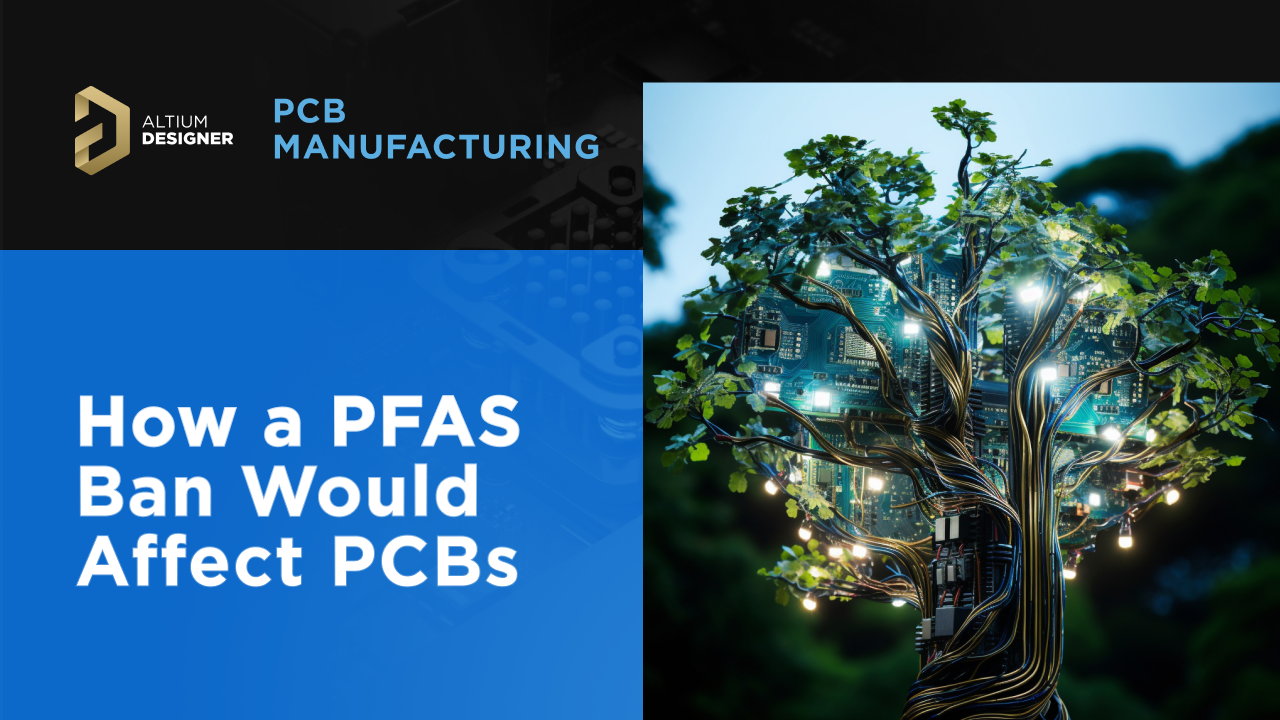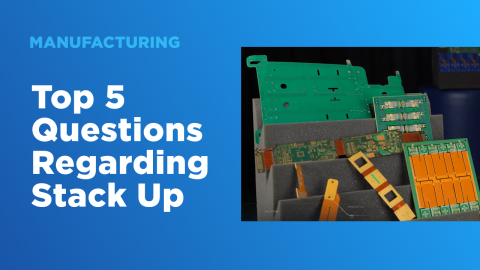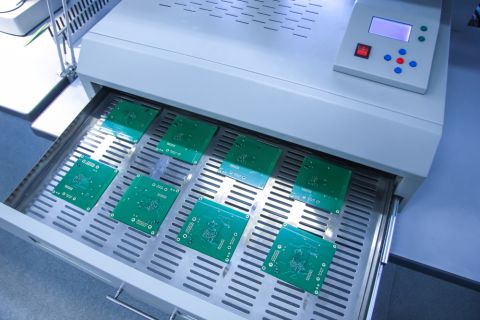How an EU PFAS Ban Will Affect Your PCBs

Electronics manufacturing, like many industries, has made great strides to become more environmentally friendly over time. More experienced readers probably remember the Pb-free movement to eliminate Pb from many consumer and commercial products, including solder alloys and platings in PCBAs. Now the focus has shifted to perfluoroalkyl and polyfluoroalkyl substances (PFAS), particularly because the health risks associated with PFAS have become much better understood.
Currently, the European Chemicals Agency (ECHA) is proposing a broad ban on many PFAS, and such a ban could create a supply chain disruption in some corners of the PCB industry. This affects a range of materials used in end products and in manufacturing processes:
- PCB laminates
- Cleaning materials
- Films in flat panel displays
- Some adhesives and sealants
- Wiring
- Binders in batteries
New PFAS Bans Proposed in Europe
PFAS are sometimes referred to as “forever chemicals” due to the length of time they persist in the natural environment. These chemicals have very few natural degradation mechanisms, and they are resistant to breakdown in many industrial processes. For these reasons, they are used in many materials used to build modern electronics and consumer products. The result has been the steady increase in the background presence of PFAS in the natural environment.
While not an intentionally released pollutant, and despite the existence of regulations on PFAS content in many products, the ECHA recently proposed a broad ban on PFAS and PFAS-containing products. PFAS comprises a group of 4730 man-made chemicals, and the EU’s broad ban on some of these compounds could disrupt the supply chain for particular PCB materials, most notably PTFE-based materials used in RF circuit boards.
PTFE in the Crosshairs
If you’re familiar with the PTFE acronym, then you should know that PTFE is one of the main materials used in RF/microwave laminates, such as Rogers and Arlon. What you may not know is that PTFE, or polytetrafluoroethylene, belongs to a subgroup of PFAS known as fluorinated polymers. That means your favorite microwave laminates might need to be reformulated or may be banned totally if the ECHA determines PTFE should be further restricted.
Obviously, this would be a big problem for RF circuit board manufacturing, and people would naturally look to alternatives to PTFE-based laminates for use in microwave electronics.
What About Alternative Laminates?
While it may seem simple to just swap out a PTFE-containing laminate for a compliant FR4-grade equivalent with similar loss, this may not be so simple. There are many advanced FR4 laminates that have low Dk and reduced loss tangent values compared to cheaper FR4 options, and these are sometimes used as a lower-cost alternative to a Rogers material.
The problem is that these laminates also contain PFAS! If you were to pick a PCB laminate material at random, there is at least a 90% probability that the laminate contains some PFAS. Because there are so many PFAS that might be the target of a broader ban, it’s hard to say which specific laminates would be affected. The industry would need to quickly move to find alternative materials that could ensure reliability we all expect in PCB materials.
What Are Industry Groups Doing?
As of now, IPC’s member-led Environment and Health Strategic Management Team is asking manufacturers and materials vendors about their current usage of PFAS. The goal is for IPC to provide effective guidance and advocacy for companies in our industry. The goal is to ensure EU policymakers have the best set of information on PFAS usage and some recommended exemptions from the ban. These efforts could help ensure we prevent a potential supply chain disruption in the EU.
If any readers are interested in providing data, visit ipc.org to learn more.
To learn more about broader industry sustainability efforts related to PFAS regulations and remediation, take a look at our recent podcast with Kelly Scanlon, IPC’s Lead Sustainability Strategist.
Whenever you need to find and import CAD data for PFAS compliant components, make sure you use the complete set of PCB design features and integrated supply chain tools in Altium Designer®. To implement collaboration in today’s cross-disciplinary environment, innovative companies are using the Altium 365™ platform to easily share design data and put projects into manufacturing.
We have only scratched the surface of what’s possible with Altium Designer on Altium 365. Start your free trial of Altium Designer + Altium 365 today.


















